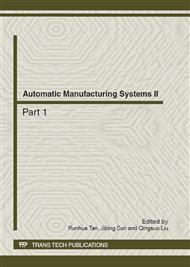p.1057
p.1061
p.1065
p.1069
p.1074
p.1079
p.1083
p.1087
p.1091
Frost Growth Simulation in Cryogenic Vertical Pipe Flow
Abstract:
This study reports a numerical CFD study concerning the effect of frost thickness on the heat transfer performance of a vertical pipe. Simulation are made under various variables affecting the frost growth such as outer flowing air conditions (temperature, flow velocity, humidity) and inner flow conditions of cryogenic fluid. The frost growth is mainly associated with the outer conditions. The frost thermal conductivity could play an important role in the froth growth. There is no great. The simulation for frost formation carried out with coupling to a commercial CFD code(CFX). The CFD simulation offers the possibility to predict frost formation within vertical geometries. The frost formation is based on the Lewis analogy of heat and mass transfer and it is embedded with CFX. The vertical surface temperature of the freezing body is determined by fluid structure interactive error method.
Info:
Periodical:
Pages:
1074-1078
Citation:
Online since:
June 2012
Keywords:
Price:
Сopyright:
© 2012 Trans Tech Publications Ltd. All Rights Reserved
Share:
Citation:


